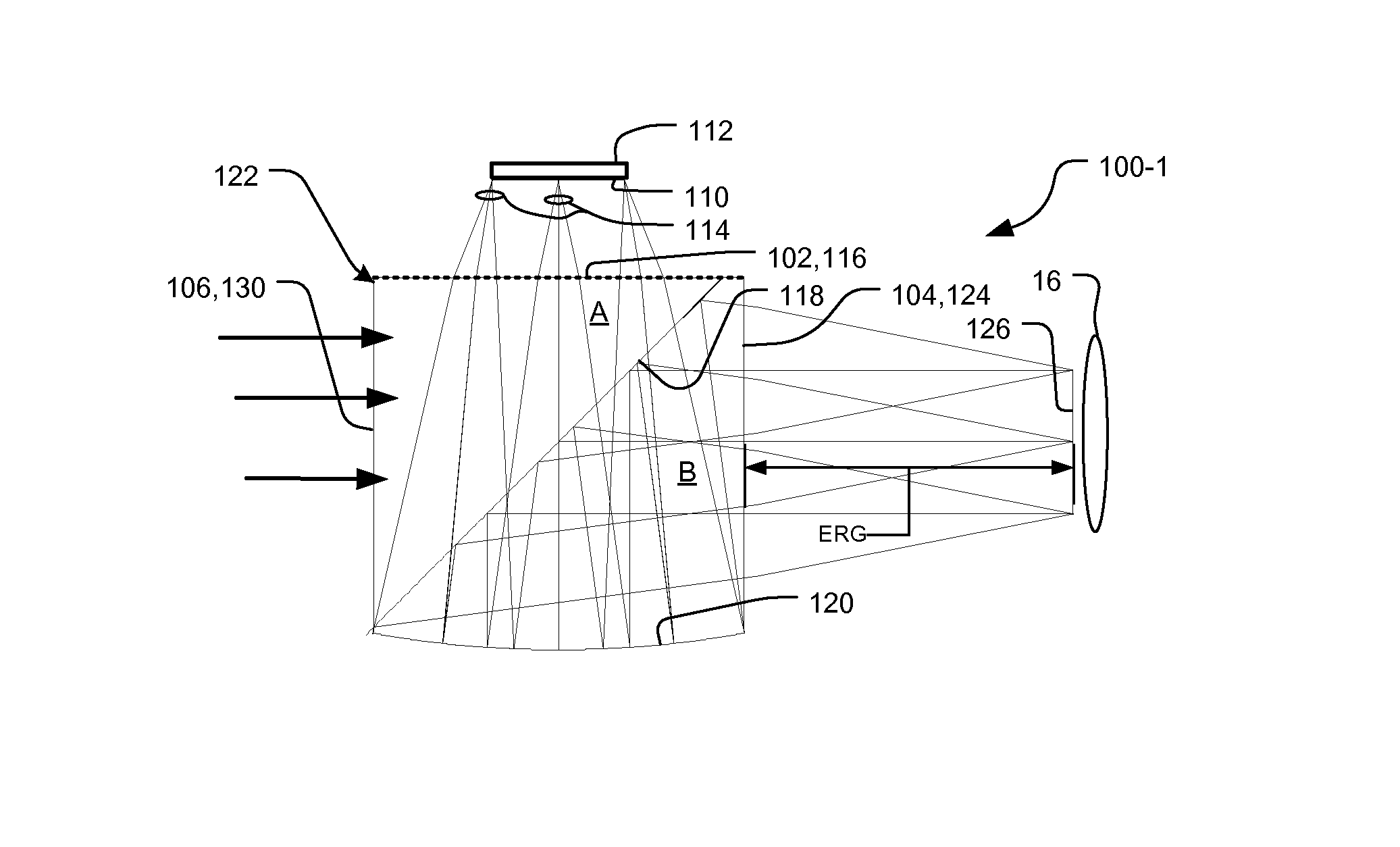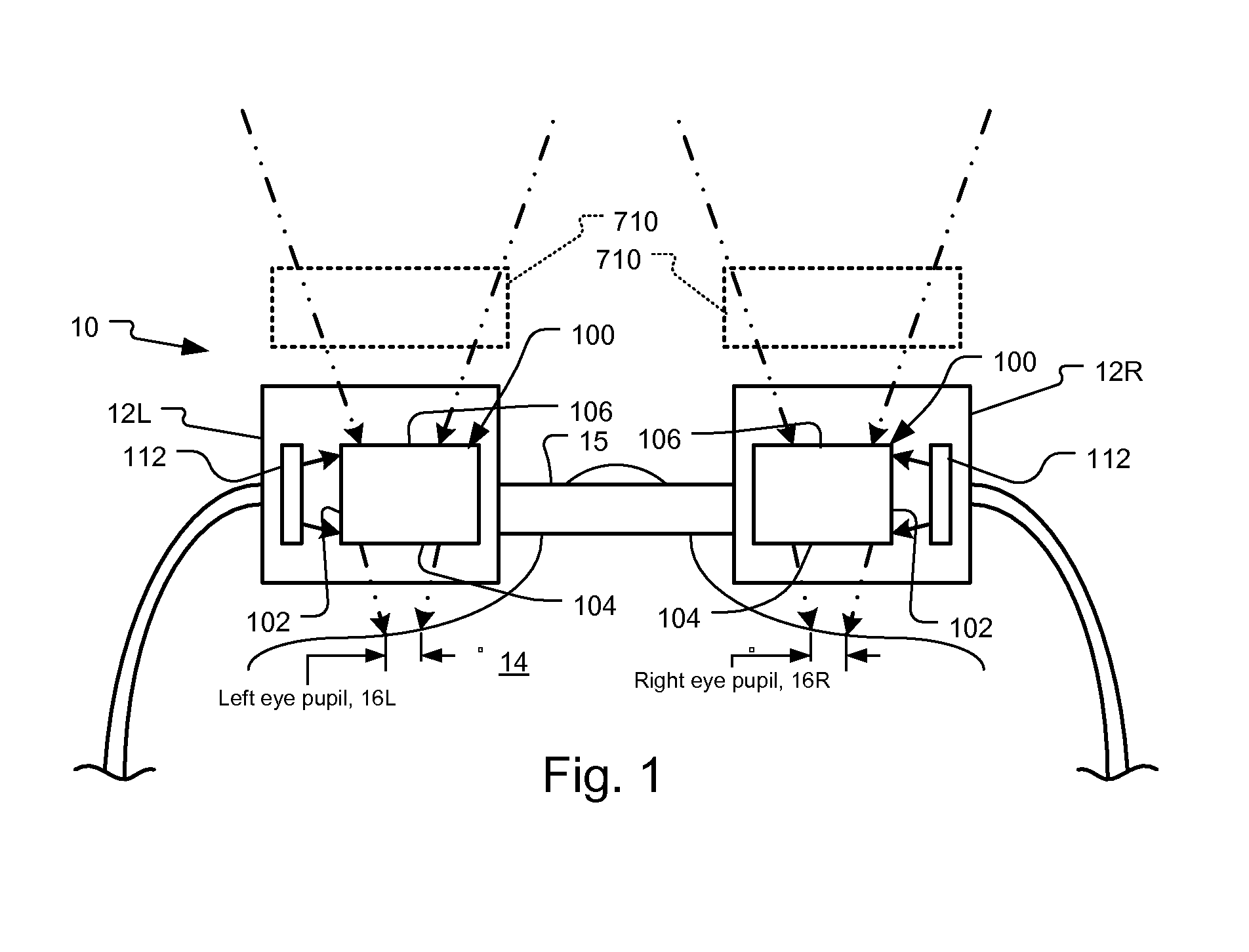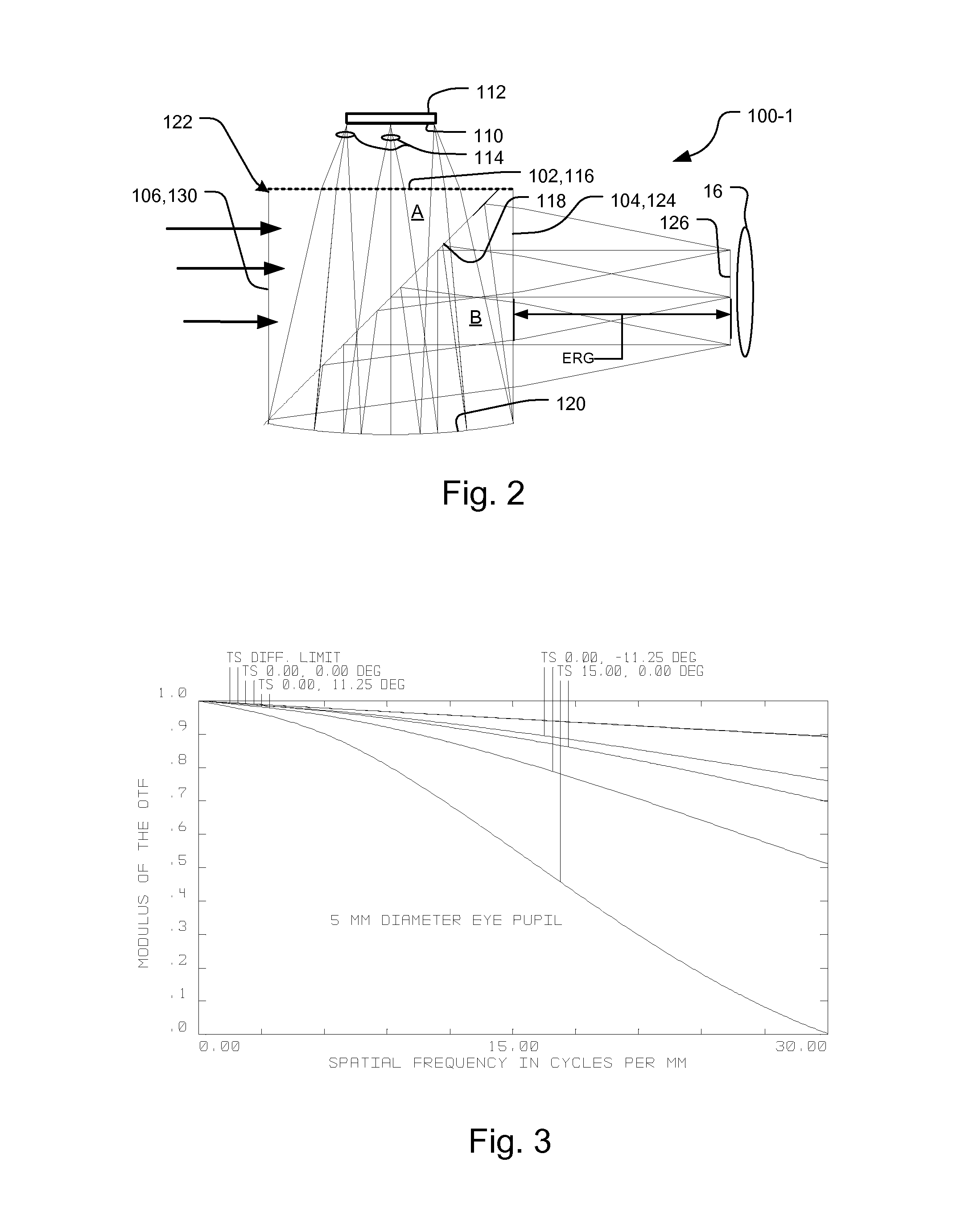Eyepiece for head mounted display system and method of fabrication
- Summary
- Abstract
- Description
- Claims
- Application Information
AI Technical Summary
Benefits of technology
Problems solved by technology
Method used
Image
Examples
second embodiment
[0065]FIG. 5 shows an eyepiece 100-2 that has been constructed according to the principles of the present invention.
[0066]This second embodiment eyepiece 100-2 can also be made monolithic. It preferably incorporates an aspheric and a diffractive optical element (DOE) surface that together can yield excellent eyepiece performance over a large field of view and relatively long eye relief distance. This element needs only two powered surfaces, as opposed to the three of the prior art, and achieves full color correction via the DOE surface. The reflective surface simply provides mechanical folding and is not optically significant otherwise, in a current preferred embodiment. The element does not require any optical anti-reflection coatings, though they may be added to improve stray light rejection. If the element is made of a plastic material, it can be readily manufactured either directly by diamond turning or by a mold process wherein a metal mold master is diamond turned.
[0067]In mor...
third embodiment
[0079]FIG. 8 shows an eyepiece 100-3 that has been constructed according to the principles of the present invention.
[0080]This third embodiment provides full color correction and simultaneous imaging of two separate focal planes by means of a single, monolithic element.
[0081]In more detail, light 114 originates either at surface 110, which is the location of the flat panel display source surface 112, or light 714 at surface 710.
[0082]In one example, surface 710 represents the light output from the phosphor output of an image intensifier tube. Specifically, surface 710 shows the typical 40 mm radius of curvature over the 18 mm format diameter of an intensifier tube output.
[0083]Light then passes into the monolithic element body 122 through either the upper asphere / diffractive surface 116 functioning as the display entrance port 102 or straight-through asphere / diffractive surface 716 functioning as environment entrance port 106. Both surfaces are fabricated onto a solid, optically tra...
first embodiment
[0095]In step 1112, the inverses of one or more diffractive surfaces, for example surface 116 of the first embodiment, are formed in the mold according to a first fabrication option. Presently, this might be accomplished with diamond turning or other microfabrication techniques such as lithography with or without chemical or ion etching.
[0096]In step 1114, the mold is filled with the plastic or other material for the body 122 in a compression or injection molding process, for example.
[0097]In step 1116, the body 122 is ejected after sufficient material solidification.
[0098]In step 1118, if a second fabrication option is pursued as an alternative to the first option, the diffractive optical element, such as element 116 in the first embodiment, is added to the body. In one example, an embossing process is used, in which the diffractive element 116 is impressed into the body by local deformation (e.g., heated stamping UV curing to facilitate deformation) or in a thin layer of material ...
PUM
 Login to View More
Login to View More Abstract
Description
Claims
Application Information
 Login to View More
Login to View More - R&D
- Intellectual Property
- Life Sciences
- Materials
- Tech Scout
- Unparalleled Data Quality
- Higher Quality Content
- 60% Fewer Hallucinations
Browse by: Latest US Patents, China's latest patents, Technical Efficacy Thesaurus, Application Domain, Technology Topic, Popular Technical Reports.
© 2025 PatSnap. All rights reserved.Legal|Privacy policy|Modern Slavery Act Transparency Statement|Sitemap|About US| Contact US: help@patsnap.com



